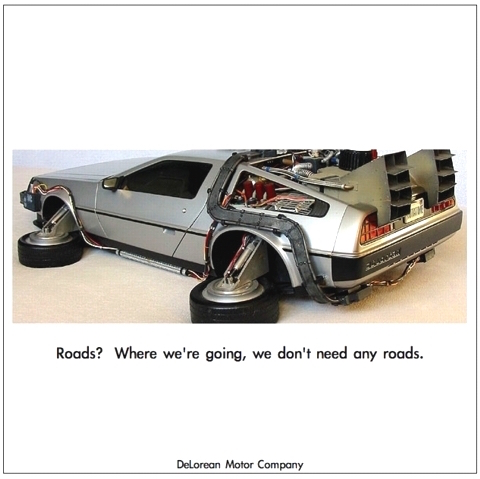

(Don't Use Canvas to contact me, use email link)
Office: LD 156-S, 278-9244
Class: ET 202, Monday and Wednesday from 12:00 - 1:15
http://woodahl.physics.iupui.edu/Astro100MW
Is the University open/closed today?
The date for the last exam (Exam 3) is Wednesday, April 24th, 12:00 to 1:15. The exam is not comprehensive. There is no final, course ends after this day.
5 Bonus Points are available to all students if the following condition is met: 80% class participation in filling out the official IUPUI Online Course Evaluation.
Electroweak Era: Three Forces: Gravity, Strong, and Electroweak
Particle Era: Elementary Particles (and Anti-Particles) are Abundant
Nucleosynthesis Era: Quarks Bind to Form Protons and Neutrons
Atoms Era: Universe is Cooled so that Nuclei Attract Electrons to Form Atoms & Molecules
Evidence for the Big Bang Theory: Penzias and Wilson and their Microwave Antenna
Spectrum of Microwave Radiation Closely Matches Big Bang Theory
High-Tech Big Bang Detector in Your Home: Snowy Channel on an Antenna-Fed TV
The date for the last exam (Exam 3) is Wednesday, April 24th, 12:00 to 1:15. The exam is not comprehensive. There is no final, course ends after this day.
5 Bonus Points are available to all students if the following condition is met: 80% class participation in filling out the official IUPUI Online Course Evaluation.
Travelers on Earth's Surface (Curvature) and Orbiting Objects (Forces) Follow the Same Path
Rubber Sheet Analogy: Matter and Energy Warps Space (and Time)
Relative Time: Moving Clocks Tick Slower: A 50 Years Long Trip Takes Only 2 Years for the Astronauts
Worldline (Includes Space and Time) of Earth as it Orbits the Sun
Blackhole: Spacetime Sufficiently Curved so that the Slope is Greater than Velocity of Light
Karl Schwarzschild (Developed the First Relativistic Theory of Blackholes)
Blackhole's Singularity: Infinite Density and Pressure, Classically
General Relativity Allows for Wormhole Solutions for Faster than Light Travel
"Back To The Past": General Relativity Allows for Wormhole Solutions for Time Travel
The date for the last exam (Exam 3) is Wednesday, April 24th, 12:00 to 1:15. The exam is not comprehensive. There is no final, course ends after this day.
Ray Davis Jr, 2002 Nobel Prize in Physics for the Detection of Cosmic Neutrinos (Homestake Detector)
Three Types of Neutrinos (To Make for Six Leptons, Similar to the Six Quarks)
3.5 Billion Year Old Stromatolites Show Microbial Evidence, Including Photosynthetic Microbes
Double-Helix Structure of the Deoxyribonucleic Acid (DNA) Molecule
The Evolution of the Origin of Life (and therefore Evolution)
Liquid Water Can Only Exist on a Planet's Surface in the Habitable Zone
64-Meter Parkes Radio Telescope in Australia Listens for Extraterrestrial Communications
".. If you only knew the power of the BRIGHT side, .. Obi-Wan never told you ..."
Effective Fusion Reaction in Sun: 4 Protons Produce Helium and Energy
About 80 multiple-choice questions, use the study guide and review your notes and quizzes
Rememberize to bring a #2 pencil
''.. I brought my pencil, gimme something to write on, man ..'' OpScan sheets will be provided, pick one up when you enter
4 questions, multiple choice, review your notes from previous four lectures
The Ahnighito Meteorite from Greenland (34 tons), Displayed at New York Museum of Natural History
Nucleus of Comet Vilt-2 Photographed by Spaceprobe Stardust in 2004
Comets Come From Oort Cloud and Kuiper Belt (Previous Image)
Comet SL9 Impacting Jupiter in 1994 as seen from Io (Rendition)
This ends Exam 2 material.
4 questions, multiple choice, review all your notes from the past four lectures
Jupiter's Three Cloud Levels: Ammonia, Ammonium Hydrosulfide, Water
Source of Io's Heat: Elliptical Orbit and Jupiter's Tidal Forces
Saturn's Titan: Nitrogen and Methane Atmosphere (Photo NOT Color-Corrected)
Huygen's Spaceprobe Reveals Some of Titan's Surface Features
4 questions, multiple choice, review all your notes from the past three lectures
In no less than 1000 words, TYPED, submitted as PDF (not Word or txt, etc.) to bwoodahl@iu.edu, explain in your own words the "Bethe Weizsacker Cycle". Make sure your paper includes a short discussion where you contrast it with the Proton-Proton Chain. Include your full name, the due date is Thursday March 28th at 5:00 PM. Late submittals are not accepted.
Atmospheric Scattering of Light: Blue Daytime Skies and Red Dawn
Mars' Orbital Ellipticity: Hemispherical Asymmetry in the Seasons
Water Ice & Trace Amount of Dry Ice in Mars' North Pole Ice Cap During Northern Hemisphere Summer
4 questions, multiple choice, review your notes from the last two lectures
Mars' Ancient Water Erosion by Rainfall: Lack of Small Craters
Evidence for Water Today (Oct 2005) on Mars: High Resolution Picture 1
Evidence for Water Today (Oct 2005) on Mars: High Resolution Picture 2
Evidence for Water Today (Oct 2005) on Mars: High Resolution Picture 3
Evidence for Water Today (Oct 2005) on Mars: High Resolution Picture 4
New Images for Water on Mars (Sep 2015): High Resolution Picture 1
New Images for Water on Mars (Sep 2015): High Resolution Picture 2
Venus' Surface Close-Up from Soviet Union's Venera Lander Using an Optical Imager
About 70 multiple-choice questions, review all your notes and quizzes
Rememberize to bring a #2 pencil or HB lead for mechanical pencil
''.. I brought my pencil, gimme something to write on, man ..'' OpScan sheets will be provided, pick one up when you enter
4 questions, multiple choice, review your notes from the last three weeks (this will also help prepare for the exam)
Know everything about light
Know about the fundamental particles (and other aspects of matter)
Understand the distinction between chemical and nuclear reactions
4 questions, multiple choice, review your notes from the past two weeks
Know all about Newton, his Laws of Motion, and his Law of Gravity
Photon (wavy line) Being Absorbed by Atom -> Electron (solid blue line) Jumps Up into Higher Orbit
Atom Emitting a Photon (wavy line) -> Electron (solid blue line) Jumps Down into Lower Orbit
4 questions, multiple choice, review your notes from the past four lectures
Know the history of Foucault, Galileo, Kepler, Brahe, Copernicus
Know the numbers/info regarding galaxies, and stars in galaxies
Know the motion of Earth's path around Sun (ecliptic plane, perihelion = closest to the sun, etc.) and the seasons
Know about the Moon's motion around the Earth and the phases of the Moon
4 questions, multiple choice, review your notes from last week, know:
The metric prefix names for various powers of ten
Dividing two numbers and obtaining the "order of magnitude"
The number of stars in a galaxy and the number of stars in the observable universe
The speed-of-light in the metric units (3 x 10^8 meters/second)
I post this early, just to keep it on everybody's radar screen: 5 Bonus Points are available to all students if the following condition is met: 80% class participation in filling out the official IUI Online Course Evaluation (near the end of semester).
Syllabus (PDF). Please print and keep with your notes.
Master Schedule (PDF). Please print and keep with your notes.
These documents may be changed/updated during the semester. Please check that you have the latest versions.
A solar eclipse only occurs if the New Moon is about within half a degree of the ecliptic plane (defined by the orbit path of Earth as it travels around the Sun). The Moon's orbital path, around the Earth, is (unfortunately) inclined by about 5 degrees to the ecliptic. Thus, there are only two opportunities each moonth (punning) when the Moon passes through the ecliptic. These points are called the nodes (ascending, descending). The Moon passing through a node is not sufficient, it must pass through the node during the New Moon lunar phase.
About twice a year, during an approximately 45 day window (based upon the orbital speeds of the Earth and Moon), the New Moon is close enough to a node that a solar eclipse can occur. Further complicating the motion, the Moon's orbital plane precesses relative to the ecliptic. Hence, the nodes precess around the ecliptic, completing one rotation about every 18.6 years. In addition, because the Moon's path around Earth is elliptical, during many solar eclipses the angular diameter of the Moon is not large enough to fully cover the Sun. Only when the New Moon is near a node and near perigee (i.e. closest to the Earth), does totality occur. On average, it takes about 400 years for totality to occur again at the same geographical location.
Many thanks to Ryan Bertram, who introduced me to this YouTube video (courtesy of Rob Bryanton, Canadian author) that discusses the ten possible dimensions of our universe.
Many thanks to Tim McCormick, who introduced me to this webpage that models early solar system formation.

Department of Physics, IUI - Updated on April 17, 2024 at 2:41 PM EDT